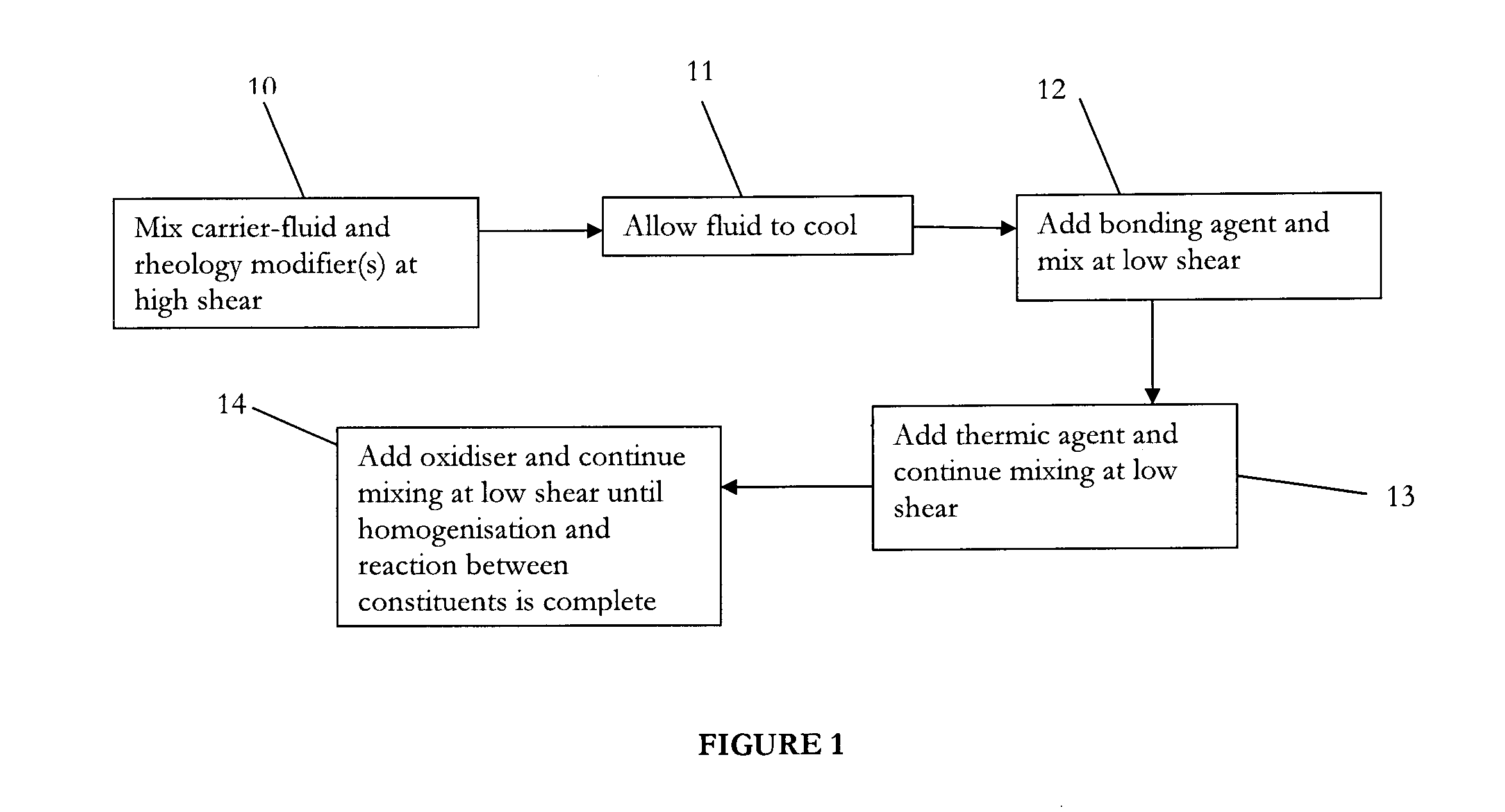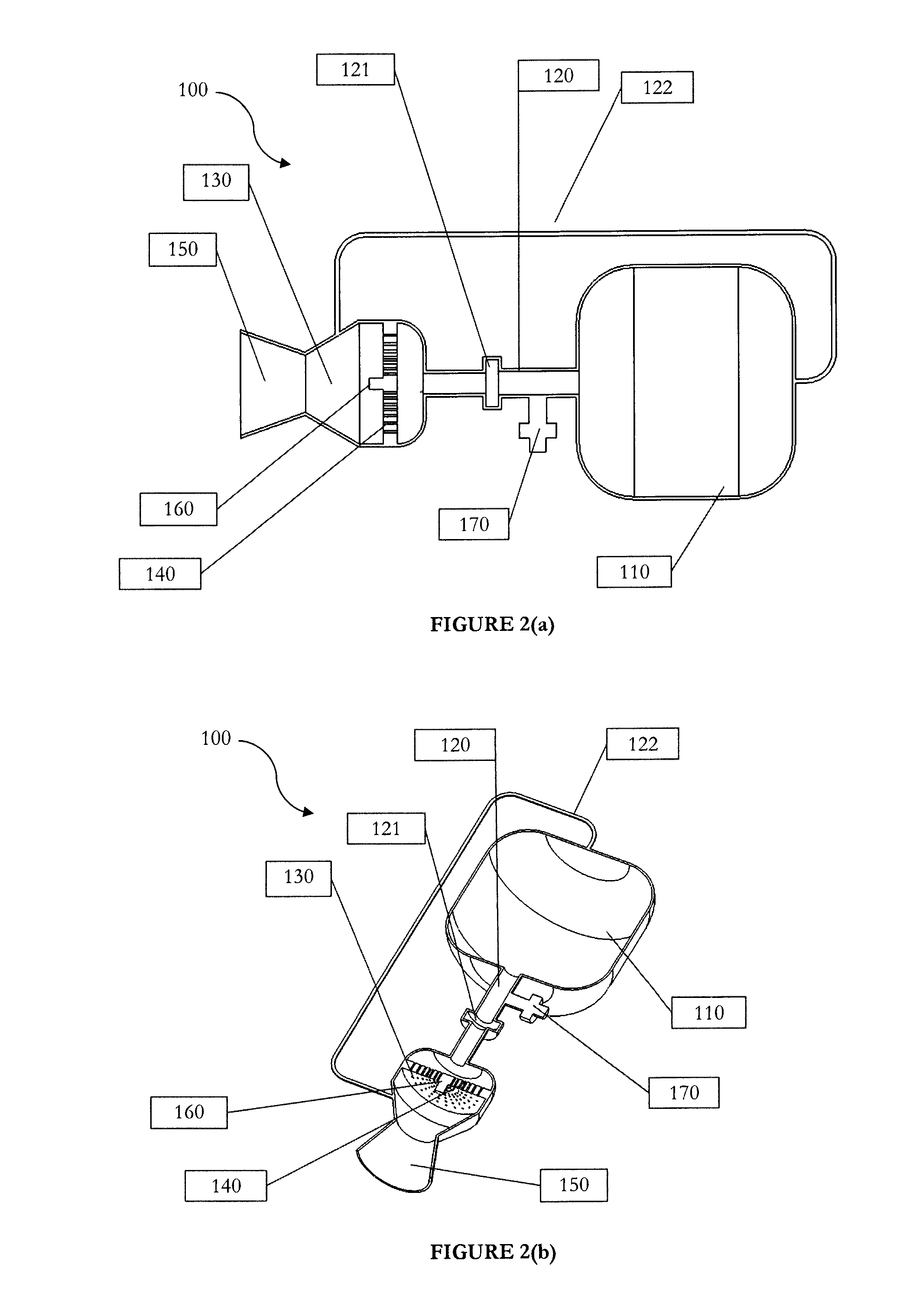Viscous Liquid Monopropellant
a liquid monopropylene and viscous technology, applied in the field of propellants, can solve the problems of affecting the use of traditional solid and liquid propellants, affecting the performance of liquid propellants,
- Summary
- Abstract
- Description
- Claims
- Application Information
AI Technical Summary
Benefits of technology
Problems solved by technology
Method used
Image
Examples
Embodiment Construction
[0081]The invention is directed to the use of liquid multi-component monopropellants as chemical reactive media for application in rocket engines for the means of propulsion or reaction control in rockets or missiles, or alternative rapid gas generation applications.
[0082]The invention also relates to the construction of a rocket motor and fuel system thereof and, in particular to a new and useful monopropellant rocket motor containing a liquid propellant that is pumped into the combustion chamber via chemical or mechanical means, atomised and then ignited. The atomisation step significantly increases the surface area of the propellant, therefore improving the efficiency of combustion.
[0083]The preferred form VLM is a non-Newtonian fluid containing both oxidisers and fuels. These monopropellants are comprised of a variety of liquid and solid components, mixed together to form a homogenous fluid, although heterogeneous in composition. The solid constituents are retained within the li...
PUM
 Login to View More
Login to View More Abstract
Description
Claims
Application Information
 Login to View More
Login to View More - R&D
- Intellectual Property
- Life Sciences
- Materials
- Tech Scout
- Unparalleled Data Quality
- Higher Quality Content
- 60% Fewer Hallucinations
Browse by: Latest US Patents, China's latest patents, Technical Efficacy Thesaurus, Application Domain, Technology Topic, Popular Technical Reports.
© 2025 PatSnap. All rights reserved.Legal|Privacy policy|Modern Slavery Act Transparency Statement|Sitemap|About US| Contact US: help@patsnap.com



